I2P (Invisible Internet Project) and Tor (The Onion Router) are two of the most secure and convenient ways to keep yourself secure online. Both are designed to keep your online activity anonymous and hidden from surveillance, but are they similar?
While Tor is widely known for hiding your online identity (IP address), accessing the dark web and routing traffic through volunteer-operated nodes, I2P focuses more on creating a secure, decentralized network for internal communication and anonymous hosting. In an age where digital privacy is under constant threat, understanding the differences between I2P and Tor and how to use them is essential.
In this guide, we’ll compare their security, speed, usability, and real-world privacy performance, so you can decide which one offers the best protection for your online anonymity today.
Tor vs I2P at a quick glance
| Feature | Tor | I2P |
| Best for | For browsing the internet anonymously or accessing restricted content | Allows users to host or communicate anonymously |
| Security focus | Protects external web browsing and user identity | Protects internal network communication |
| Speed | Slower due to multiple relay hops but optimized for browsing | Generally faster for internal traffic, slower for external connections |
| Anonymity level | Very high | High |
| Traffic routing | Uses onion routing (layers of encryption through volunteer nodes) | Uses garlic routing (bundles multiple messages for extra privacy) |
| Use cases | Anonymous browsing, whistleblowing, accessing blocked sites | Hosting anonymous websites, secure file sharing, messaging |
| Network type | Partially centralized with directory servers | Fully decentralized internal network |
| Configuration level | Easier to use (just install the Tor Browser) | More complex setup, suited for advanced users |
- You need Tor if: You want to browse the public web anonymously, bypass censorship, or access .onion sites. Ease of use is a priority.
- You need I2P if: You want to host anonymous services (eepsites), use decentralized apps, or engage in P2P filesharing within an anonymizing network. You’re comfortable with more configuration.
I2P vs Tor – Why you hide your internet identity
The open internet, or “clear web,” means anything but private. Everything you do, from performing a simple search to making a full-scale transaction, leaves a breadcrumb-like traceable path; your IP address.
Hiding your internet identity (IP address) is a form of digital self-defense from just as many actors and threats:
- Mass surveillance: A significant aspect of modern life is that government and law enforcement organizations are surveilling the vast majority of internet traffic, which compromises individuals’ basic freedoms and rights related to free speech and assembly. People can use anonymity tools to communicate and gather information without the apprehension of reporting.
- Targeted advertising and data mining: Companies and third parties are tracking what we do online every moment for the purpose of constructing a fully developed online profile on us. This provides opportunities for price discrimination and manipulation, allowing for the commodification of our personal lives.
- Censorship and geo-blocking: Authoritarian governments have, in many instances, blocked people from access to information. Find out what activists, journalists, and regular people are doing to evade firewalls installed by the authorities and reach the open web through anonymity networks.
- Protecting against identity theft: Protecting your IP address can help prevent an attacker or identity thief from using one of the important identifiers either to carry out an attack or to steal your identity.
- Whistleblowing and reporting: Reporters and their sources require anonymity to report on matters in a reasonable manner, to protect both safety and the integrity of their information.
What are I2P and Tor?
Ultimately, I2P and Tor are software applications that leverage distributed routing to anonymize network traffic. Routers encrypt data and then send that data to installed nodes (which volunteer to run it) for routing at the nodes anonymously. That means no single entity can trace a connection back to you. Let’s see how both work.
Tor (The Onion Router)
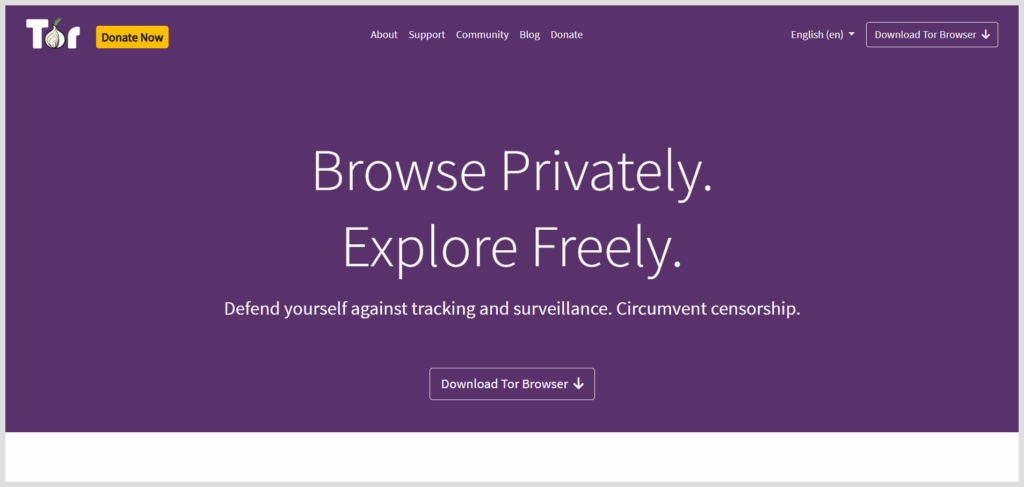
Just as the name suggests, Tor utilizes the Onion Routing process. It creates multiple layers of encryption (resembling the layers of an onion) to encrypt your data and routes that data across three nodes (Entry, Middle, Exit).
Each router only knows the location of the previous and next router in the chain used to route the data. Tor Browser uses this process. The Tor Browser is one of the best and suitable browsers to access the dark web. It is crucial to understand that using Tor is legal in most parts of the world; you can explore the legal nuances in our detailed guide, is Tor illegal or legal.
I2P (The Invisible Internet Project)
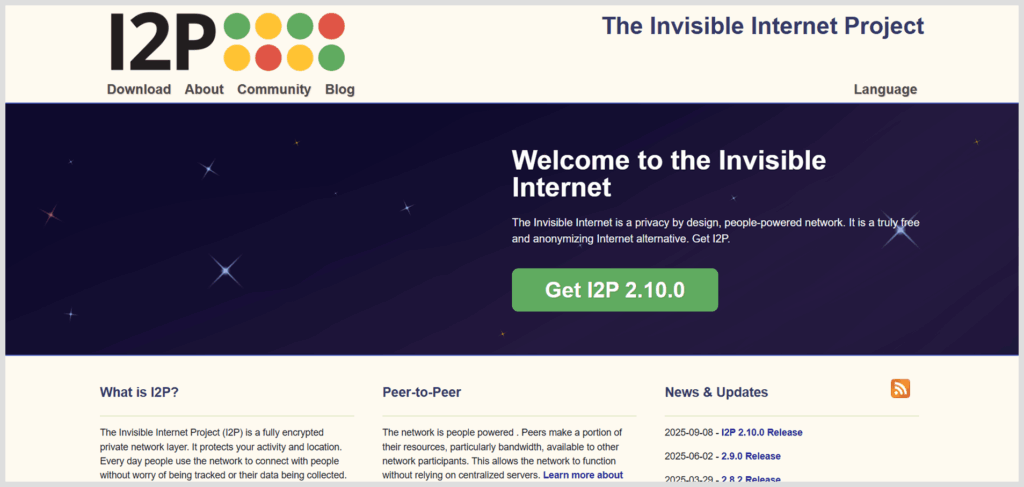
I2P uses Garlic Routing, in which I2P bundles multiple messages (“cloves”) for different destinations in a single “garlic” to be sent. This is done in order to be secure, as well.
It uses asynchronous, one-way tunnels for both inbound and outbound, putting the transport back into true peerto-peer (P2P) for hosting and accessing services on the same network.
Why use Tor?
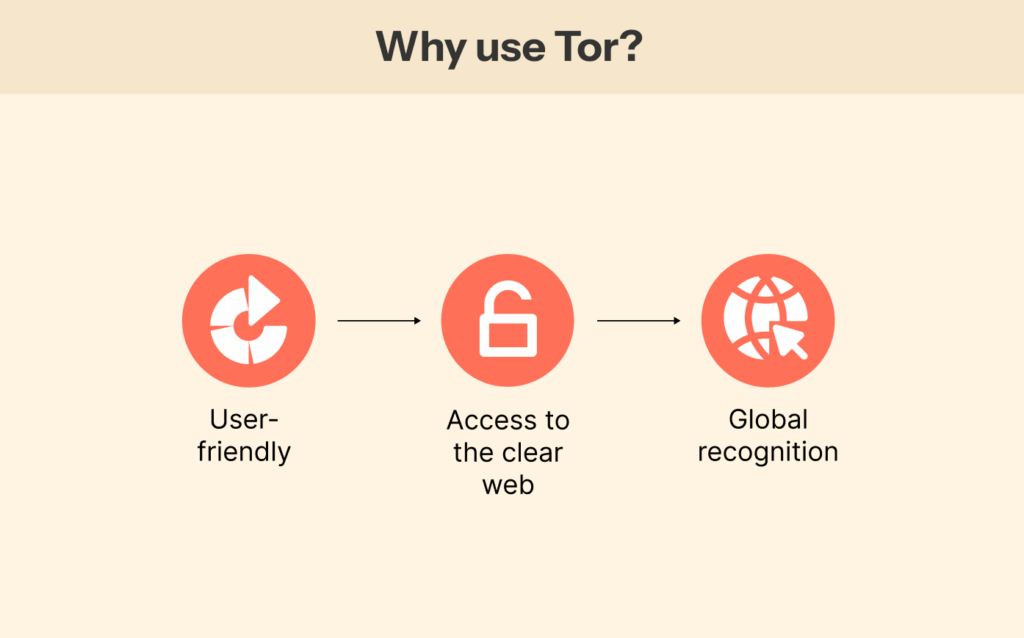
Tor is a useful tool for gaining maximum anonymity and for several important reasons:
- Seamless access to the clear web: Tor is designed mainly with a focus that encourages anonymous access to the regular internet (clear web) via its designated exit nodes. This provides semi-masking regarding censorship.
- User-friendly: It is a user-friendly, all-in-one package to make available to become anonymous. For most people, using Tor is as simple as launching the app.
- Large user base/network size: Tor has millions of daily users and thousands of active relays worldwide; the larger network offers a “mix” of traffic, which is an important factor in higher anonymity.
- Global recognition and support: National-level organizations support the Tor network, such as major privacy organizations serving well in political dissidents and journalist communities all around the world.
Why use I2P?
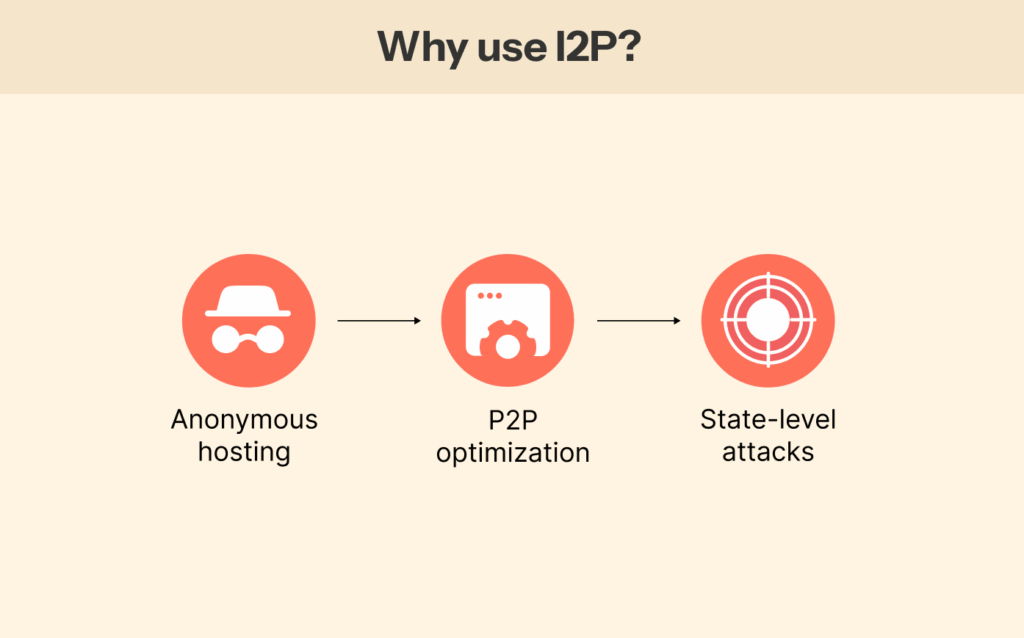
I2P is the optimal solution for various advanced use cases based on its decentralized infrastructural design:
- Better anonymous hosting: I2P provides better anonymity for service providers (i.e., website hosts) compared to client-side anonymity. The unique tunneling system creates, practically, near impossible situations to find the actual physical server hosting Eepsites.
- Better P2P optimization and streaming: It supports the internal P2P traffic and is better suited for use cases that involve downloading or streaming content compared to Tor and its tendency to slow down or throttle bandwidth use cases.
- Resilience to state-level attacks: As a decentralized, self-organizing network, I2P has no Directory Authorities like Tor (that can be easily compromised). There is no single point of failure that compromises the entire network, and no avenue to shut down the entire I2P network.
What makes I2P good
The core strengths of I2P stem from its architectural differences from Tor:
| Strength | I2P Mechanism | Benefit |
|---|---|---|
| Decentralization | Every user is a router; no central authority. | High resilience and no single point of failure. |
| Traffic direction | Asynchronous (one-way tunnels for inbound/outbound). | Harder for traffic analysis to link the sender and receiver. |
| Garlic routing | Bundles multiple messages into one “garlic.” | Enhanced protection against correlation attacks and surveillance. |
| Hidden services | Provides intrinsic anonymity for Eepsites (services). | The network is designed around securely host services. |
What makes I2P and Tor different?
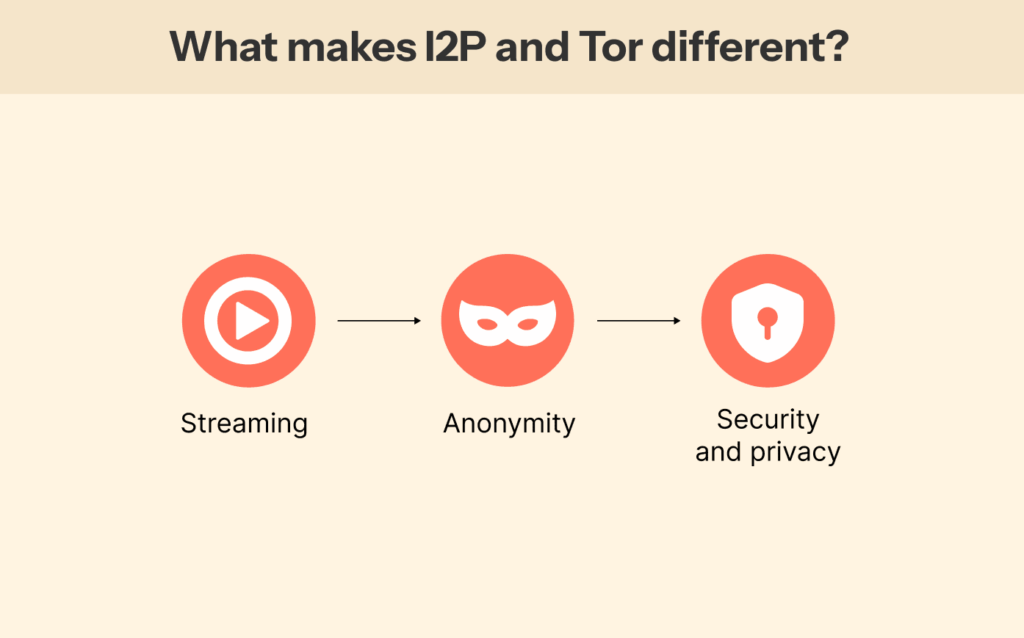
The difference between these two networks is primarily with their design, objectives, and traffic management.
The throughput sub-section and the following table summarize the main differences between I2P and Tor:
Streaming
Given that its infrastructure was designed with low-latency in mind and the internal P2P connections are efficiently executed, I2P is much more optimized than Tor for streaming media and bandwidth-intensive applications within the network.
For instance, it allows you to do P2P file sharing. Likewise, its decentralized architecture and dynamic routing modes can address the persistent flow of data better.
On the other hand, due to the built-in three-hop path and congestion on the Tor network, users often experience high latency, making streaming always a less-than-satisfactory experience – a definite downside for anyone looking to stream video or music.
Anonymity
Both protocols are very good at providing anonymity, but they have different emphases. Tor is better for “user” anonymity and allows users to access blocked or restricted services safely (even the dark web), as it has a large pool of users that it can use to randomly mix traffic. With its established user base and many different relay locations across the globe, it is very effective at cloaking its users’ identities.
I2P is better for “service” anonymity, making it a stronger protocol for hosting a private service that needs to remain online and conceal its location. Although you can use I2P for general browser traffic (like Tor), it is the de facto go-to network for many hidden internet (dark web) sites.
Security and privacy
Both networks are secure and private, but they operate in different ways. Tor is one of the most secure designs you will find; thanks to the three-node path between your computer and the destination.
While the connection to the exit node is encrypted, the traffic from the exit node to the final destination (e.g., a website) is only secure if using HTTPS. For HTTP traffic, the exit node operator can see and even modify the data.
I2P, on the other hand, uses asynchronous, end-to-end encrypted tunnels to protect and eliminate that single point of failure for traffic within its network. So, it obscures both where a packet comes from and where it is going, which facilitates a more robust design for its internal services.
Since I2P operates on a peer-to-peer (P2P) network, it’s inherently more reliable. Plus, I2P’s strong focus on hidden services gives it an added advantage, offering better protection against network traffic analysis and surveillance.
Centralization vs. decentralization
Tor is based on a central directory authority that holds the list of all currently active relays. This allows for a predictable, consistent network, but it introduces a single point of failure and makes the network a more attractive target for attackers at the state level.
I2P, on the other hand, is a decentralized P2P network with zero central authority (which means there’s no governing or controlling entity). Instead of central directory servers, I2P uses a distributed hash table (DHT) called the Network Database (NetDb). This NetDb, which contains information on routers and tunnels, is shared peer-to-peer among all nodes.
Thus, it has more resilience to attacks and is much more difficult to take down.
Symmetrical connections
Tor uses a client-server framework. When you connect, you make a request to a server (for example, a website), and the server creates a response back to you. The connection is bilateral.
I2P routes data through one-way “tunnels”—one for sending requests and another for receiving responses. This separation makes it harder for anyone to trace both ends of a communication, adding an extra layer of anonymity and security compared to traditional two-way connections.
Comparison of Tor and I2P terminology
| Tor terminology | I2P terminology | Description |
|---|---|---|
| Onion Routing | Garlic Routing | The core layered encryption mechanism for routing traffic. |
| Relays / Nodes | Routers | The volunteer-run computers that forward encrypted traffic. |
| Circuit | Tunnel | The defined path a data connection takes from origin to destination. |
| Onion Services | Eepsites | The hidden websites and services that only exist within the respective networks. |
| Exit Node | Outproxy | A router that allows traffic to leave the network and access the clear web. |
Benefits of Tor over I2P
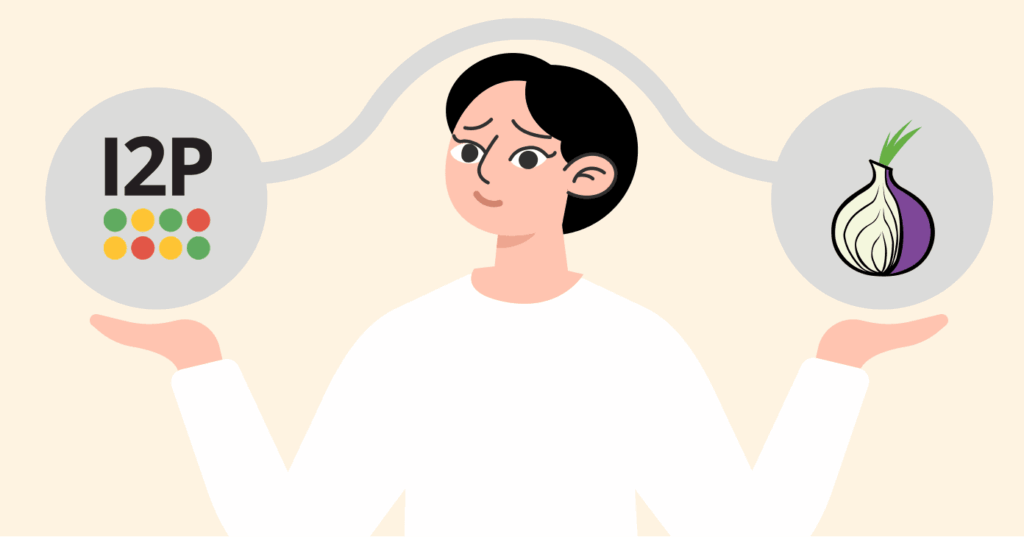
Despite I2P’s technical merits, Tor remains the more dominant and widely used tool for most users, largely due to its focus on accessibility and extensive infrastructure:
Superior clear web access
Tor’s design is explicitly centered around providing anonymous access to the regular, open internet (and the deep and dark web), a function that is crucial for censorship circumvention.
Journalists, activists, and privacy advocates use Tor to access common (or restricted) websites, news sources, and tools that are blocked by state-level firewalls and government monitoring.
I2P would accomplish the same using out-proxies, but its limited, smaller, and less reliable network of out-proxies can make it very slow. As a result, I2P is not an appropriate substitute when the objective is to gain anonymous access to content outside the I2P network.
Simplified user experience
The Tor Browser is an instantly recognizable and incredibly simple tool that requires almost zero user configuration. It is a simple “download and run” solution based on Firefox.
It comes preconfigured with maximum privacy settings (you can change settings to enhance privacy) and has the minimum configurations for proxies necessary to connect to the Tor network. The fact that the user does not have to perform any configurations is a significant advantage that verbally makes privacy tools available to millions, not just a small cadre of people extremely knowledgeable about technology.
I2P often requires configuration of browsers, routers, and different client applications, and for this reason is far less approachable for a typical user looking for immediate anonymity.
Larger and more reliable network
The Tor network is larger than I2P, with over a thousand connected relays at any given time. It also has millions of daily users. Because of this size and number of users, users consistently see a steadier, reliable connection and better overall anonymity.
The large user base creates a massive mixing pool for traffic, making it much harder for anyone observing to use traffic analysis to infer a user’s activity.
Because there are so many relays available, individual relays are less likely to become overloaded. This creates a more stable, though slower, browsing experience than I2P, whose smaller P2P network often faces instability and congestion under heavy user loads.
I2P and Tor vs VPN
It’s crucial to understand that neither I2P nor Tor is a direct replacement for a Virtual Private Network (VPN). They serve fundamentally different purposes:
| Feature | VPN | Tor/I2P |
|---|---|---|
| Purpose | Encrypts your connection and masks your IP from your ISP and the outside world. | Anonymizes your traffic so no node can tell where the traffic comes from or where it is going. |
| Speed | Fast enough for streaming and heavy usage. | Slower, because of multi-hop encryption, and relays will be congested. |
| Hop count | 1 (The VPN server) | More than 1 (3 hops with Tor, more with I2P tunnels) |
| Trust model | Trust one VPN provider to not log data. | Trust a decentralized community-owned and maintained network to not log data. |
| Censorship | Bypasses geo-blocks and basic firewall censorship. | Bypasses state-level censorship and more advanced censorship barriers. |
In a nutshell: A VPN masks your IP and encrypts your data through a trusted single hop. In contrast, Tor and I2P let you disappear online by routing your traffic through multiple untrusted hops. Some users will even use a VPN with Tor for the highest level of security (Tor over VPN). You can read our guide here to learn everything Onion over VPN.
FAQs
Both are very secure but have unique advantages. The size of the Tor user base provides fantastic anonymity, with many users in the pool to generate traffic. The P2P nature of I2P’s decentralized architecture can make it more resilient against some state-level risks and better suited to anonymous hosting.
No, sites which are hosted on the Tor network (Onion Services) cannot be accessed on I2P and vice-versa. They each have their own hidden services.
In most countries, using Tor or I2P is not illegal. Using these networks to commit an illegal act would, of course, be illegal.
The speed of Tor is affected by the number of users, as well as network congestion. There is also latency from the three-hop encryption and routing process. Plus, volunteer-run relays often have limited bandwidth, which is a major bottleneck, especially for high-traffic nodes. This is a more specific reason than just “congestion, which can make a Tor session feel slower than a normal internet session.
A hidden service is a website or service that can only be accessed from that network (I2P or Tor) and aims to hide both the user’s and service provider’s identity and location.
Yes, when you configure your VPN first and then connect to Tor, neither your ISP nor the entry Tor node will know your IP address or your traffic data, which now provides an extra layer of protection against correlating attacks.

